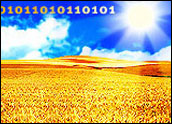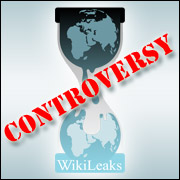
A set of PowerPoint slides that appear to contain details about the next version of Microsoft’s Windows operating system surfaced Monday.
The slides indicate that Microsoft plans to tackle the long-running problem of Windows’ slow start-up time, in addition to placing cutting-edge technology such as facial recognition in the new operating system.
Questions remain, however, about the authenticity of the material.
The slides, dated April 2010, first surfaced on the Italian Web site Windosette. They apparently made their American debut on a site called “Microsoft Journal” that appeared to have been removed from the Windows Live platform Monday afternoon.
Microsoft Mum
“The only way we will ever know if these slides are authentic is if Microsoft comes out and says they are — and that’s not likely to happen,” said Michael Cherry, vice president of research, operating systems, with the independent analyst firm Directions on Microsoft.
“We’re looking into this, but we do not have a comment at this time,” Rachel Hass, a member of the Microsoft public relations team, told TechNewsWorld.
Several of the slides remain available for viewing on the Microsoft Kitchen site operated by Stephen Chapman.
“I’m quite confident these are the real deal,” Chapman wrote on his site. “I just feel bad for the poor sap who either leaked these or inadvertently shared these with the world.”
If the slides are genuine, they reveal that, among other things, Microsoft wants to apply certain strategies that Apple has used successfully in developing and promoting Windows 8.
A slide titled “How Apple Does it: A virtuous cycle” says Apple has created value that leads to product satisfaction, which in turn leads to brand loyalty. The slide concludes with the words, “This is something people will pay for!”
Seeking Brand Loyalty
This slide is not an indication that Microsoft feels Apple’s technology is superior, but rather that Apple has done a better job of getting customers to identify with its products, Chapman said in an interview with TechNewsWorld.
“Apple has cultivated a unique loyalty to its brand,” Chapman said. “How many Windows stickers have you ever seen on the back of a car? Now, how about Apple logos? Ultimately, that brand loyalty equals money, and I think Microsoft is just looking to tap into Apple’s market.”
The leaking of this presentation could hurt Microsoft’s chances of building brand loyalty if they mention features that consumers find appealing and those features don’t make it into the final version of the operating system, Cherry surmised.
“The problem with dealing with leaked documents is that they don’t tell us what stage of development the new operating system is in,” Cherry told TechNewsWorld. “It could be a problem if they’re in the Blue Sky stage, where almost anything is on the table. There’s a danger of building expectations for things that ultimately don’t get delivered.”
If the leaked documents can be believed, the things Microsoft currently plans to deliver include letting users log into the operating system by looking into a Web camera, faster start-up times and greater support for wireless technology.
A Reliable, Repeatable Process
Faster start-up times “have been in every Microsoft plan since Windows 95,” Cherry said, indicating that is something that might not make it to the final version of Windows 8. “Everybody is looking at biometric identification,” he added. “With Web cams now widely available, facial recognition makes sense.”
Where Microsoft runs the biggest risk — particularly if it hopes to build brand loyalty — is if it missed the stated 2012 date for delivering the new operating system, Cherry said.
“Microsoft needs prove that it can deliver operating systems in a reliable and repeatable fashion,” he remarked. “They had some trouble getting Windows Vista out on time. They did pretty well in that regard with Windows 7. Now, they have to prove they can do it again with Windows 8, or whatever the next version is going to be called.”





















































